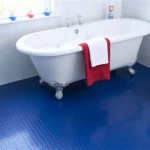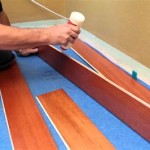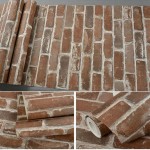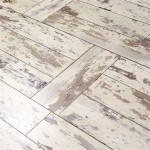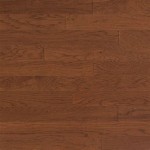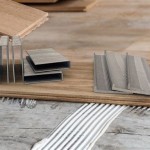How To Install End Piece Of Laminate Flooring In Bathroom
Installing laminate flooring in a bathroom can enhance its aesthetics and provide a water-resistant surface, particularly when properly sealed and installed. The end pieces, those final planks bordering walls, cabinets, or fixtures, require special attention to ensure a clean, professional, and watertight finish. This article provides a comprehensive guide on how to install the end piece of laminate flooring in a bathroom, focusing on accurate measurement, precise cutting, and secure installation techniques. Addressing potential challenges like moisture exposure and irregular wall shapes is crucial for a lasting and visually appealing result.
The following steps will outline the process in detail, from preparing the subfloor and selecting the correct tools to properly sealing the perimeter and handling potential obstacles. Success ultimately depends on meticulous preparation, precise execution, and the use of appropriate materials designed for bathroom environments.
Key Considerations Before Starting
Before embarking on the installation, several factors must be considered to ensure a successful outcome. Addressing these preemptively can prevent costly mistakes and ensure the longevity of the laminate flooring.
Moisture Resistance: Bathrooms are inherently humid environments, subjecting flooring to frequent exposure to moisture. While laminate flooring offers some water resistance, it's essential to select a laminate product specifically designed for bathroom use. These products often feature a more robust core and a tighter locking mechanism to minimize water penetration. Furthermore, a waterproof underlayment must be installed to further protect the subfloor from moisture migrating through the laminate.
Subfloor Preparation: The subfloor must be clean, level, and dry. Any existing flooring, such as vinyl or tile, should be removed unless the manufacturer's instructions specifically permit installing laminate over it. Check for any imperfections, such as cracks or unevenness, which must be repaired. Self-leveling compound can be used to create a smooth and even surface. Clean the subfloor thoroughly to remove any debris that could compromise the stability of the laminate.
Acclimation: Laminate flooring needs to acclimate to the bathroom's environment before installation. This process involves leaving the unopened boxes of laminate flooring in the bathroom for at least 48 to 72 hours, allowing them to adjust to the temperature and humidity levels. Acclimation helps prevent warping or buckling after installation.
Tools and Materials Required
Having the correct tools and materials readily available will streamline the installation process and contribute to a professional-looking result. Gather the following items before commencing the project:
- Laminate flooring planks
- Waterproof underlayment
- Measuring tape
- Pencil
- Tapping block
- Pull bar
- Spacers
- Saw (circular saw, jigsaw, or laminate flooring cutter)
- Safety glasses
- Knee pads
- Caulk gun
- Silicone sealant (specifically designed for bathrooms)
- Moisture meter (optional, to check subfloor dryness)
Ensuring that the tools are in good working order, especially the saw, is vital for precise cuts and safety. A dull blade can cause splintering and inaccurate cuts, leading to a less-than-desirable outcome.
Step-by-Step Installation of End Pieces
The installation of end pieces requires careful measurement, accurate cutting, and proper sealing to prevent water damage. Follow these steps for a professional finish.
1. Measuring the End Pieces: This is arguably the most critical step. Measure the distance between the last full plank and the wall or obstruction at multiple points along the length of the plank. Walls are seldom perfectly straight, so taking multiple measurements ensures an accurate representation of the required cut. Account for the expansion gap, typically ¼ to ⅜ inch, which allows the laminate to expand and contract with temperature and humidity changes.
2. Transferring Measurements to the Laminate Plank: Carefully transfer the measurements onto the laminate plank using a pencil and a straight edge. Ensure the markings are clear and precise. Remember to account for any angled cuts required to match the wall's contours. If dealing with pipes or other obstructions, create a template using cardboard to accurately trace the shape onto the plank.
3. Cutting the Laminate Plank: Using the appropriate saw, carefully cut the laminate plank along the marked lines. For straight cuts, a circular saw or laminate flooring cutter is ideal. For curved or intricate cuts, a jigsaw is the preferred choice. When using a jigsaw, use a fine-tooth blade designed for laminate to minimize chipping. Always wear safety glasses to protect your eyes from debris.
4. Checking the Fit: Before permanently installing the cut plank, dry-fit it in place to ensure it fits snugly and accurately along the wall or obstruction, maintaining the expansion gap. Make any necessary adjustments to the cut if needed. This step is crucial for preventing gaps or overlaps that could compromise the appearance and water resistance of the flooring.
5. Installing the End Piece: Once the fit is satisfactory, insert the end piece into the locking mechanism of the adjacent plank. Use a tapping block and pull bar to gently tap the plank into place, ensuring a tight and secure connection. The tapping block distributes the force evenly, preventing damage to the edge of the plank. Spacers should be used along the wall to maintain the expansion gap.
6. Sealing the Perimeter: This is a crucial step for preventing water from seeping under the laminate flooring. Apply a bead of silicone sealant along the perimeter of the room where the laminate meets the wall, bathtub, toilet, or other fixtures. Ensure the sealant is specifically designed for bathroom use and provides a watertight seal. Smooth the sealant with a finger or a sealant smoothing tool for a clean and professional finish. Wipe away any excess sealant immediately with a damp cloth.
7. Covering the Expansion Gap: While the expansion gap is necessary, it is not aesthetically pleasing. Cover the gap with baseboards or quarter-round molding. Attach the molding to the wall, not the flooring, to allow the laminate to expand and contract freely. The molding will conceal the expansion gap while providing a finished look.
Addressing Common Challenges
Several challenges may arise during the installation of end pieces, particularly in bathrooms with irregular shapes or existing fixtures. Addressing these challenges effectively is crucial for a successful installation.
Irregular Wall Shapes: Bathrooms often have irregular wall shapes caused by plumbing fixtures, corners, or alcoves. Accurately tracing these shapes onto the laminate can be challenging. Using a contour gauge can help to replicate the shape of the wall. Hold the gauge against the wall, allowing the pins to conform to the shape. Then, transfer the shape onto the laminate plank and cut accordingly.
Pipes and Fixtures: Installing laminate around pipes, toilets, or other fixtures requires careful cutting and fitting. Use a hole saw to create a hole slightly larger than the diameter of the pipe. For toilets, consider removing the toilet if possible to make the installation easier. If removing the toilet is not feasible, use a jigsaw to carefully cut the laminate around the base of the toilet. Seal the gap around the pipe or toilet with silicone sealant to prevent water from entering.
Doorways and Transitions: When transitioning from laminate flooring to another type of flooring, such as tile or carpet, use a transition strip to create a smooth and seamless connection. Transition strips are available in various materials and styles to match the laminate flooring. Ensure the transition strip is properly installed according to the manufacturer's instructions.
Dealing with Obstructions: Occasionally, unforeseen obstructions may be encountered during the installation process. These obstructions may include pipes, wires, or other structural elements. If possible, try to work around the obstruction by carefully cutting the laminate to fit around it. If the obstruction cannot be avoided, consult with a professional installer for advice.
Maintenance and Care
Proper maintenance and care are essential for prolonging the life of the laminate flooring and maintaining its appearance. Follow these guidelines to keep the laminate flooring looking its best:
Regular Cleaning: Sweep or vacuum the laminate flooring regularly to remove dirt, dust, and debris. Use a damp mop with a mild cleaning solution specifically designed for laminate flooring. Avoid using excessive water, which can seep between the planks and damage the core.
Preventing Scratches: Place mats at entrances to trap dirt and debris that could scratch the laminate flooring. Use felt pads under furniture legs to prevent scratches and gouges. Avoid dragging heavy objects across the floor.
Addressing Spills: Clean up spills immediately to prevent staining or water damage. Use a clean, dry cloth to blot the spill. Avoid using abrasive cleaners or scrubbing pads, which can damage the surface of the laminate flooring.
Preventing Water Damage: While laminate flooring is water-resistant, it is not waterproof. Avoid leaving standing water on the floor for extended periods. Repair any leaks or plumbing issues promptly to prevent water damage. Ensure the bathroom is properly ventilated to reduce humidity levels.
By following these installation and maintenance guidelines, the end pieces of laminate flooring in the bathroom can be installed securely and protected from water damage, providing a beautiful and durable flooring solution for years to come. Meticulous attention to detail and the use of appropriate materials are key to achieving a professional and long-lasting result.

How To Install Vinyl Plank Flooring In A Bathroom Fixthisbuildthat

How To Install End Piece On Vinyl Plank Flooring Lvp Laminate Engineered Wood Floors Simple Diy

How To Finish A Laminate Or Vinyl Floor Around Tub Shower

How To Install Vinyl Plank Flooring In A Bathroom Fixthisbuildthat

How To Install Vinyl Plank Flooring In A Bathroom

Where To End Laminate At Doorways

How To Install Vinyl Plank Flooring In A Bathroom Fixthisbuildthat

Where To End Laminate At Doorways

Install A Floating Laminate Floor For The First Time What Bb Built

How To Install Vinyl Plank Flooring In A Bathroom Fixthisbuildthat
Related Posts

